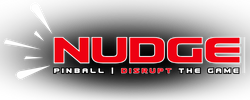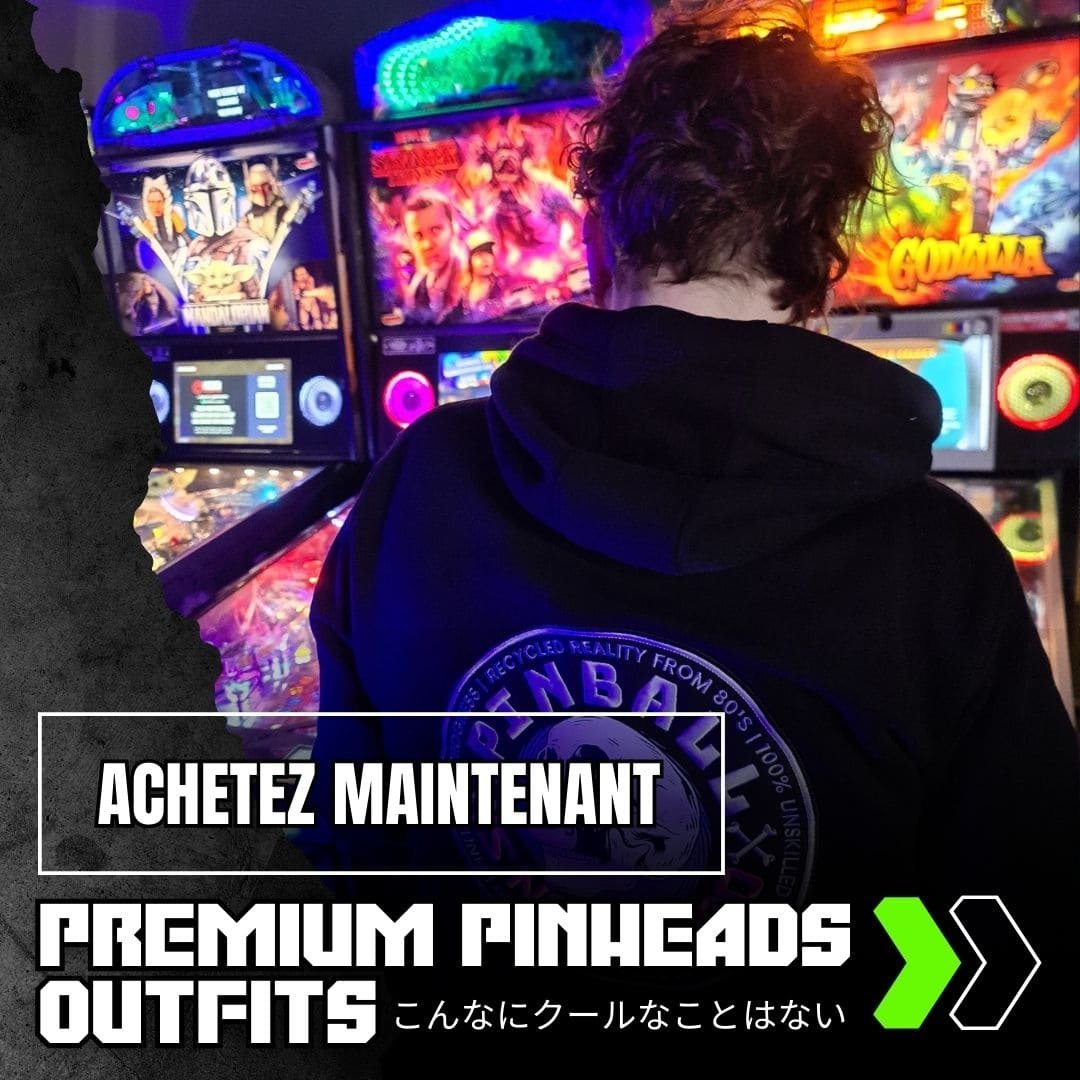Nobody expected the Dungeons & Dragons pinball: The Tyrant’s Eye, but here it is! Stern Pinball has just unveiled its machine at the start of 2025, and initial reactions seem to be mixed. Gamers at large are keeping to themselves, while the role-playing fans and level-up aficionados are more than a little excited. Both positions are understandable, and you’ll see why.
Sommaire
- 1 Dungeons & Dragons pinball: the wait wasn’t long
- 2 The cast of Stern’s D&D pinball machine
- 3 Artwork in keeping with the theme
- 4 A conventional playfield
- 5 Dragon, trapdoor, cube and shield
- 6 The Dungeons & Dragons pinball code: a nugget?
- 7 Dungeon Crawler included
- 8 Insider Connected’s contribution to Dungeons & Dragons pinball
- 9 The return of cooperative mode
- 10 If the code holds, everything holds!
Dungeons & Dragons pinball: the wait wasn’t long
Any day is a good day to do business. Even on December 31st! In any case, Stern Pinball took everyone by surprise with an explicit teaser for its new machine on New Year’s Eve.
Other manufacturers Jersey Jack Pinball and Pedretti, clearly not wanting to leave the leader alone in the spotlight, were quick to light counterfires. The former strongly implied that a Harry Potter pinball machine was planned for 2025, and the latter that a magic-themed table was in the pipeline.
Stern, unperturbed, rolls out his communication. January 3 sees the release of the D&D pinball reveal, and January 4 offers us fifteen minutes of gameplay commented on by the design team. Simple, straightforward, no frills.
The cast of Stern’s D&D pinball machine
In charge of design is the illustrious Brian Eddy. To him we owe the pinball machines Venom, Mandalorian, Stranger Things, and the legendary hits Attack From Mars and Medieval Madness.
On the code side, we find the indestructible Dwight Sullivan. In the 90s, Dwight collaborated on Junk Yard, Champions Pub and Revenge From Mars. More recently, he’s been credited on Venom, Mandalorian, TMNT (his biggest flop, if you ask me), Munsters, Ghostbusters… In short, the man’s got experience.
The artwork, on the other hand, is by an illustrious unknown, making his first appearance in the world of the silver ball. What’s his connection with the subject? Vincent has already worked on the Dungeons & Dragons role-playing game, creating illustrations on behalf of the rights holder Wizards of the Coast.
Artwork in keeping with the theme
And what about the artwork? Well, it’s certainly in keeping with the theme. The chromatic dragons on the Limited Edition, like his Tyrant’s Eye, demonstrate the artist’s mastery of the heroic fantasy bestiary. In fact, Probe’s book abounds with monsters of all kinds, often nightmarish. The backgrounds of the boxes, on the other hand, lack richness and depth. We’re treated either to flat areas of color, or to barely sketched mountains.
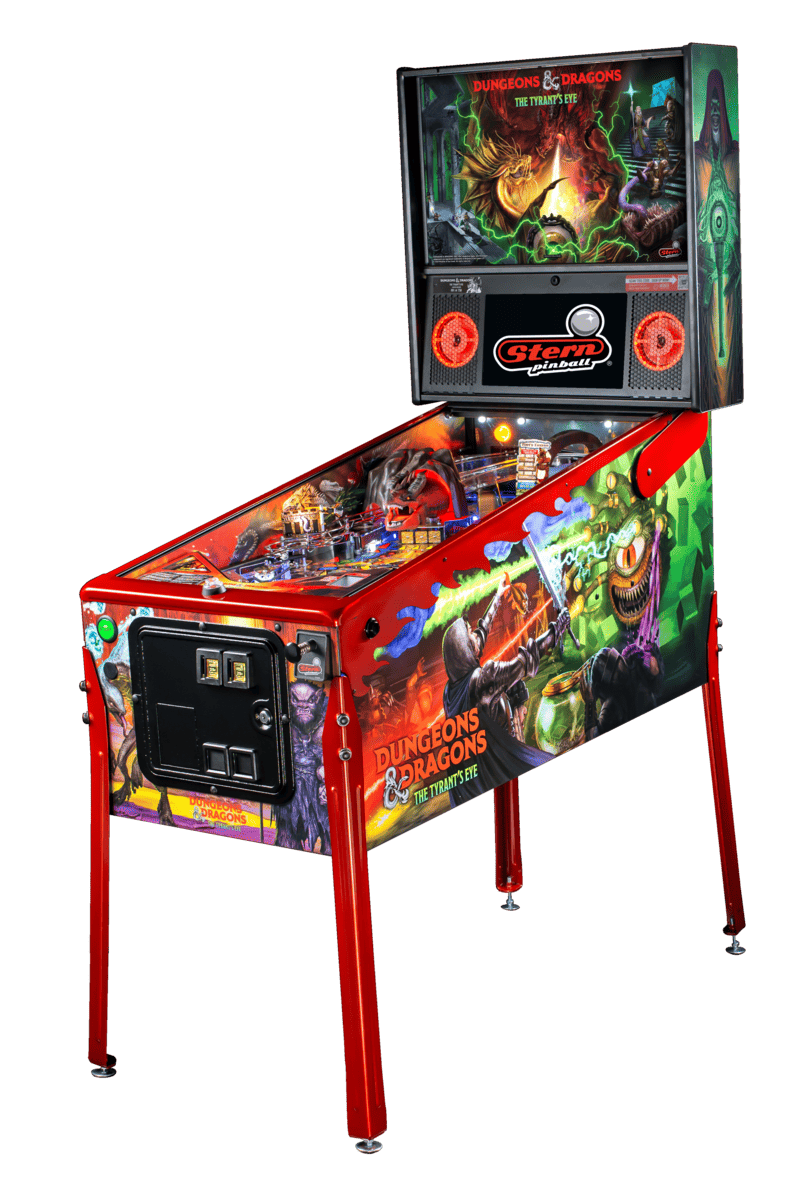
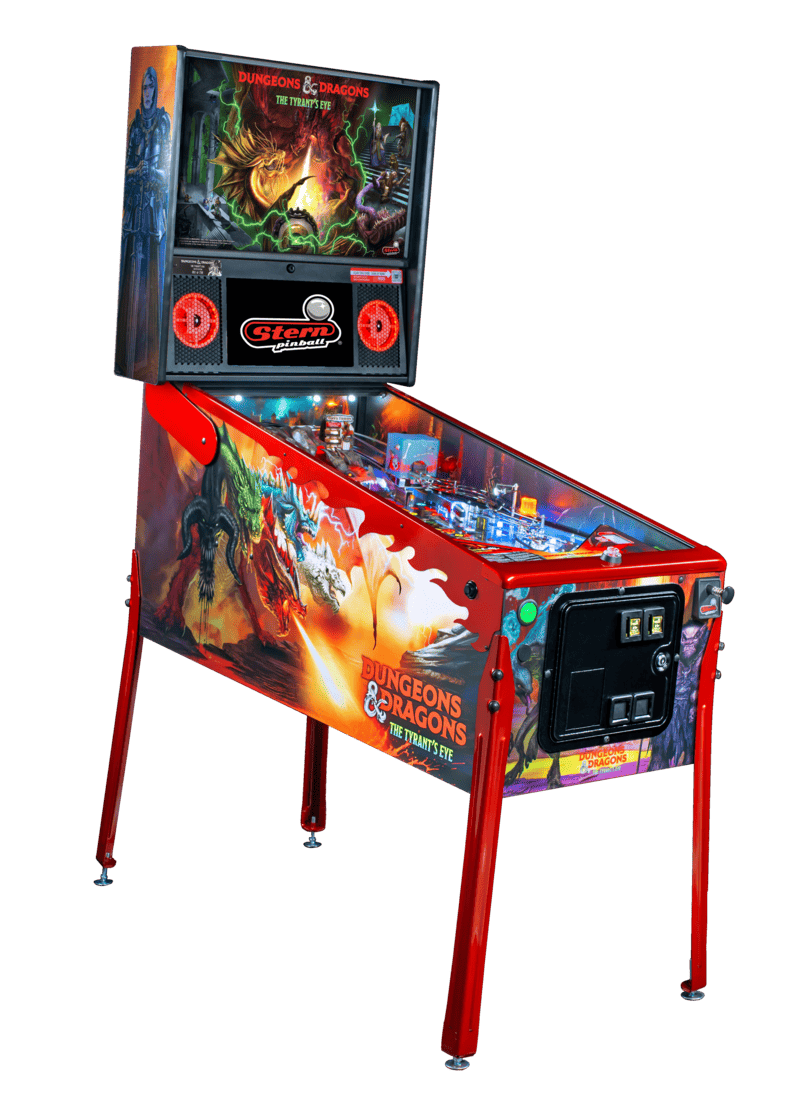
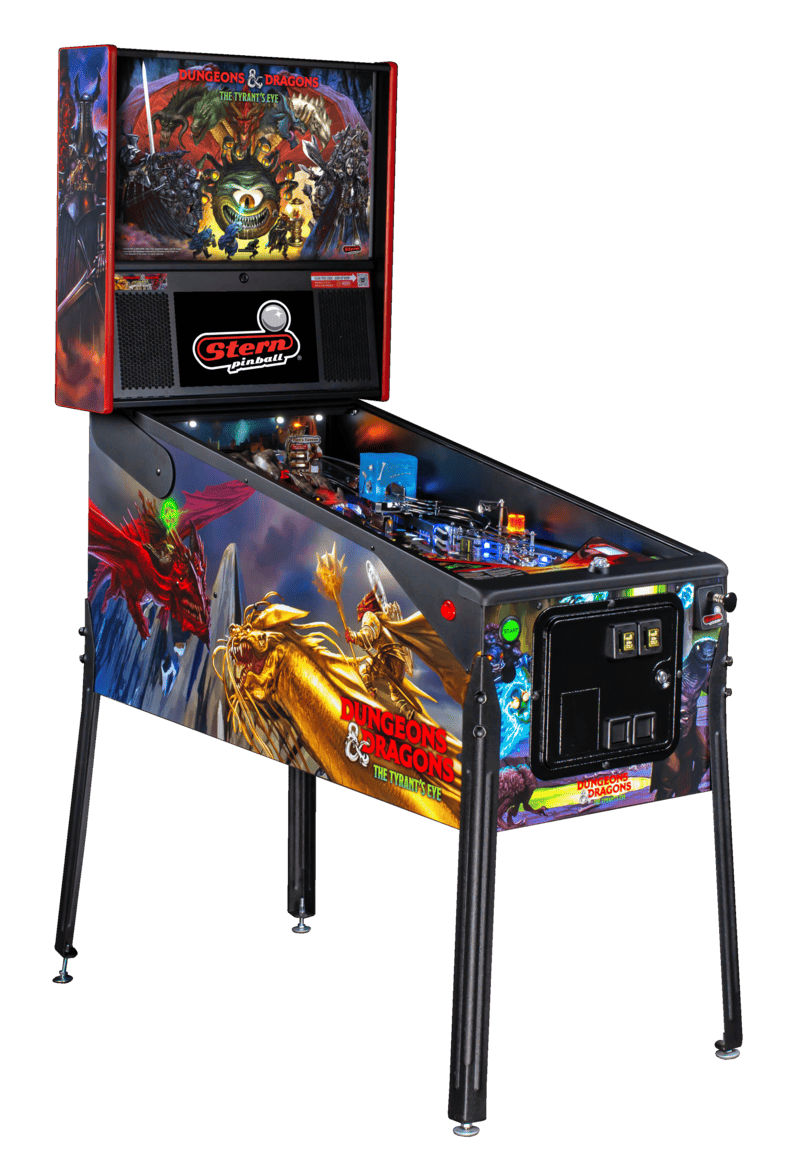
The playfield design, for its part, is generous in detail, even overloaded. Perfectly in line with the illustrations found in D&D scenarios:
- An army at slingshot level,
- fantastic creatures in every corner, including an Owlbear (my favorite!),
- shimmering colors
- a map worthy of those drawn by the great Tolkien himself.
All in all, we’re not on a perfect score, but we just miss it. If the boxes had been at playfield level, we’d have had a must-have !
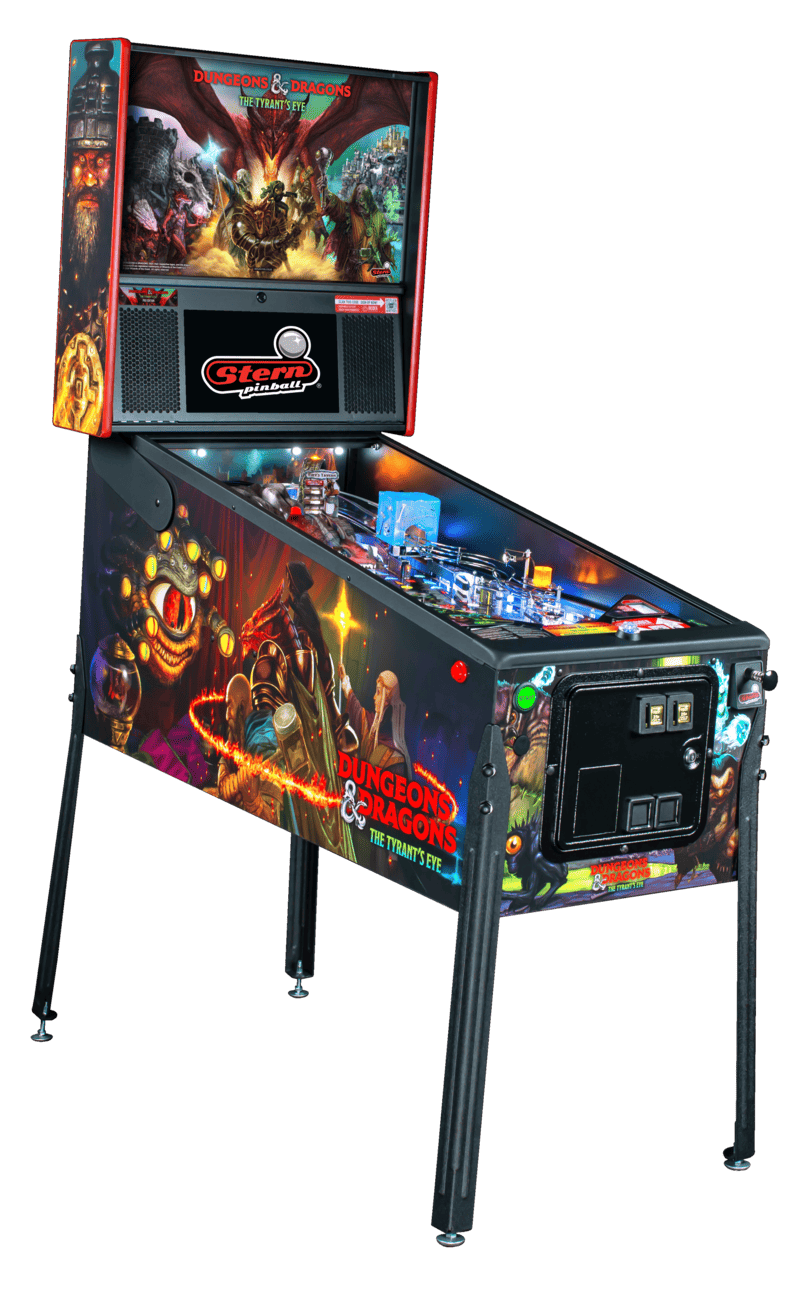
A conventional playfield
Nothing in the game sequences we were shown should come as a surprise. The bulk of the shots are concentrated at the back of the playfield, two of which are served by a third long flipper in the middle right. This one tells me that the table won’t be that easy to play. When you’ve played Jurassic Park pinball, for example, you know that an extra flipper complicates access to certain trajectories and therefore certain objectives, since you have to link two consecutive precise shots. An exercise that novices will find difficult to perform.
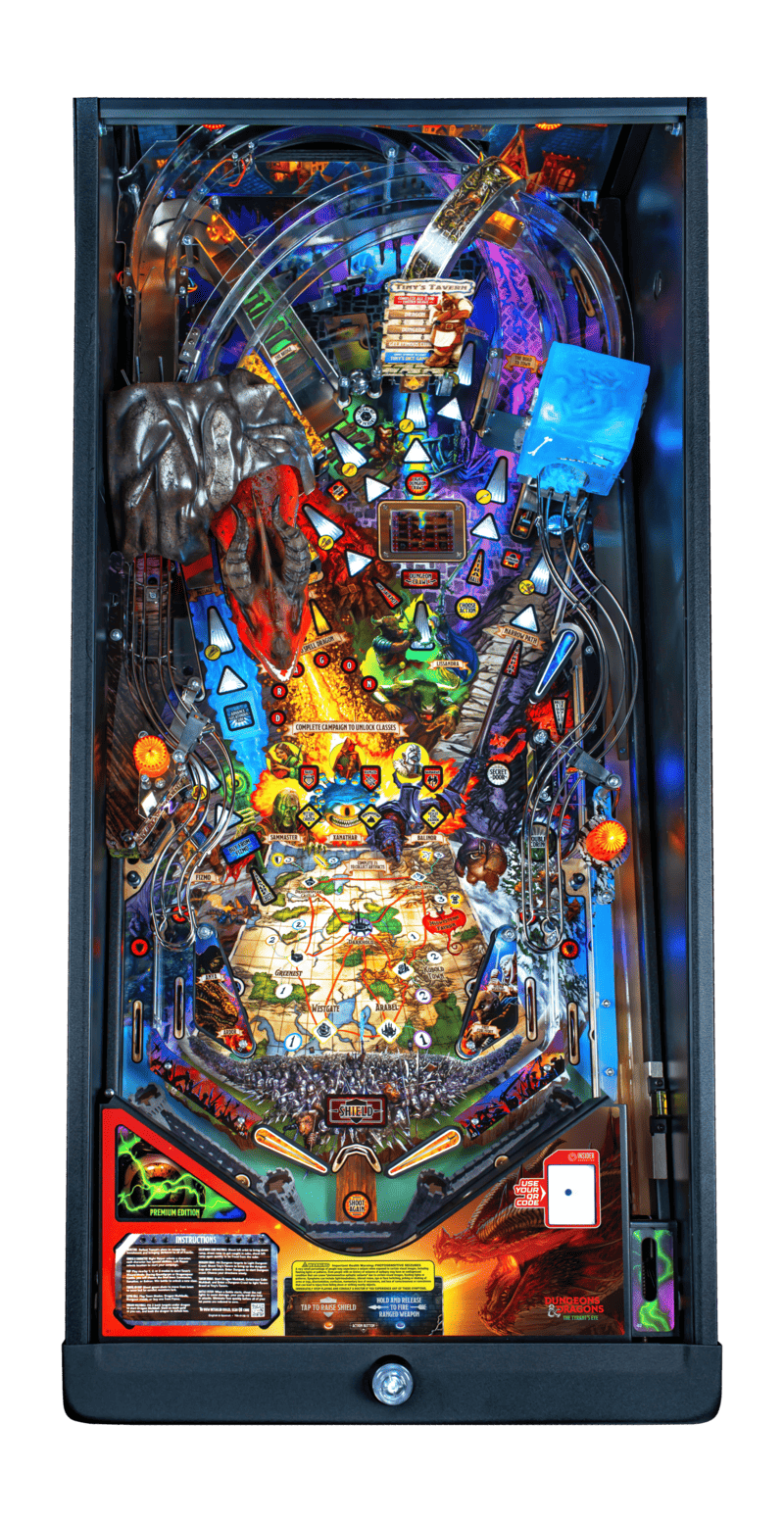
The conventional architecture of the playfield may disappoint. No tortuous ramps like Keith Elwin’s creations, no disconcerting loops, no original ball restraint. The two metal ramps lead down to the left and right inlanes in more than conventional ways.
Anyone basing their judgement solely on the playfield could well turn away from the machine without regret. But isn’t this apparent simplicity intended to leave more room for the real star of the game: the code?
Dragon, trapdoor, cube and shield
I count four mechanical features that enhance the flavor of the playfield. First, there’s the omnipresent red dragon, which Stern markets as the most complex animatronic on the market. Its role in the game is to lock balls in its throat and spit them out like fireballs, as well as to be bashed. Very well, but this isn’t groundbreaking innovation. However, when we’re told that the head tracks the ball’s movements and can dodge hits or block trajectories depending on the game’s phase, now we’re talking about a game-changing toy! (At least on the Premium and LE versions.)
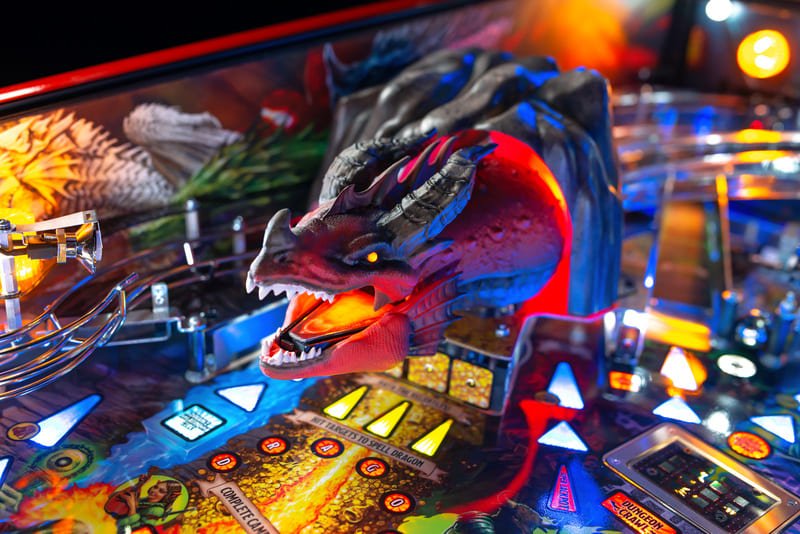
The blue cube to the right of the playfield also acts as a lock, with a magnet system that holds a ball until a second one hits the first. Not bad, but not particularly innovative.
A trapdoor opens in the middle of the playfield, like the one in Theatre of Magic. The ball flies into it, triggering a dungeon crawler mode. This is not access to a lower playfield (a mini-platform below the main one), just a special mission to which we’ll return later.
Finally, a shield occasionally comes along to obstruct the gap between the flippers. This is obviously a function that can be activated via the lockbar button or automatically during certain phases of the game.
Here we have four mechs that aren’t particularly stunning on their own, but which add up to a playfield that’s richer than it looks.
The Dungeons & Dragons pinball code: a nugget?
All this is nothing compared to the code, which is supposed to be THE strong point of this machine. And the arguments are solid.
At the start of your game, you choose between a Paladin, a Rogue, a Cleric, or a Wizard. Each class offers unique bonuses and different stats. For example, the Paladin is said to be particularly effective in dragon battles. Each class is presented through a character sheet, as is fitting for a role-playing game.
Next, the player selects missions, the progression of which is represented on the playfield map. Depending on these choices, three different endings are possible. During the adventure, challenges may include battles. Each successful shot triggers a dice roll, and the impact on the enemies’ health bar depends on the chosen character’s stats and the player’s luck. Critical hit, critical fail, bonus… Sound familiar? I’m practically giddy just writing about it! Every completed mission earns experience points, which in turn help you level up, which in turn improves the character’s stats. Oooh, I can’t take it anymore!
By the way, dice rolls mean a certain amount of randomness. We’ll need to be collectively attentive to the options to be modified during tournaments. Competition doesn’t like randomness…
Finally, you also collect gold, which you can spend on items that improve your avatar’s performance. I feel like crying.
Dungeon Crawler included
There’s more! The trapdoor triggers a dungeon crawl mode. The mechanics hark back to the early days of text-based role-playing games: “you move forward and find yourself in front of two doors and a tunnel. What do you do?” To progress, you’ll need to successfully fire a shot, then choose your path with the three buttons (left, right, lockbar). Behind each fork in the road hides a monster that delivers a reward if defeated, a treasure or the way out.
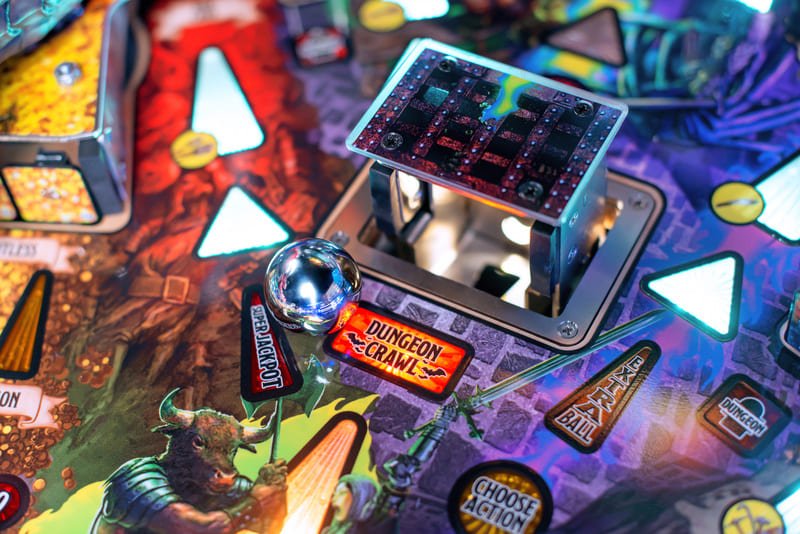
To avoid us all knowing the optimal path after a few games, the code updates every week to change the dungeon configuration. I wonder whether this connected aspect is really necessary; a random generation for each game would have done just as well. There must be technical constraints that escape me. Nevertheless, the concept is a good one.
Between the four starting characters (others are mentioned on the board – will they be playable? We’ll see), the branching scenario and the dungeon’s ever-changing configuration, it’s safe to say that Stern has gone all out for replayability! And it’s going to be decisive, since your progress can be preserved.
Insider Connected’s contribution to Dungeons & Dragons pinball
With almost every new release, Stern increases the added value of its Insider Connected module, which connects the pinball machine to the Internet. The Venom pinball was the first to partially record player progress.
The Dungeons & Dragons pinball machine pushes the boundaries even further: from now on, the character’s level, weapons and armor, as well as his or her progress through the scenario, are all recorded. Finally, I get to play a wizard mode…
The return of cooperative mode
The big comeback! This is a popular game mode, but one that has fallen out of favor in recent years. In concrete terms, several players will be able to join forces so that their balls can compete in the same scenario. Does this mean that multiplayer progress can also be maintained via Insider Connected? I don’t think we’ve had that information yet.
This feature makes perfect sense in a role-playing theme, as multiplayer adventures are at the heart of the experience sought by role-players.
If the code holds, everything holds!
In all likelihood, the code is not yet complete. Stern has become no stranger to delivering half-finished games. But what has been presented already seems rich, and doesn’t cause me any concern.
The fact remains that the role-playing mechanics will be the main attraction of this Dungeons & Dragons: The Tyrant’s Eye pinball game. Since there’s virtually no risk-taking on the layout, if the code lives up to its promise of replayability and fun, we should have a particularly successful blend of genres!
